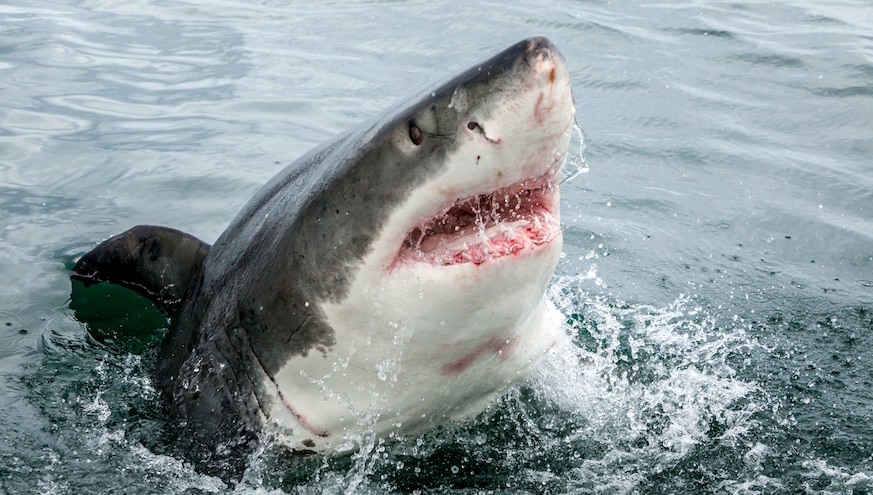Shark attacks closed Fire Island beaches Wednesday, alarming swimmers across Long Island and raising questions about the safety of New York beaches.
The shark attacks targetted two children, a 12-year-old girl and a 13-year-old boy, who were apparently bitten in their legs. The pair were treated for the puncture wounds and released, each with a bandaged right let. A shark’s tooth was removed from the boy’s leg and will be used to determine the species of shark that attacked the kids. Both kids were expected to fully recover from the shark attacks.
The good news is that despite the horror of Wednesday’s attacks, it was the first case of a shark bite on Fire Island in 70 years. Still, it’s fair that summer tourists would question whether New York beaches are safe for swimming, boogie boarding and surfing.
How many shark attacks have there been at New York beaches?
Shark attacks on humans are extremely rare in waters off Fire Island, east of New York City, or anywhere else in the state of New York, Ocean Beach Fire Department Chief told Reuters. In fact, there are only 10 cases of shark bites on humans documented at New York Beaches. The last one happened in 1948, Levine said.

And how about New Jersey beaches? Shark attacks are just as rare there, according to recent statistics, but there was a time when sharks terrorized Jersey Shore beachgoers. The Jersey Shore shark attacks of 1916 played out between July 1 and July 12, 1916, killing four people and injuring one. The carnage made headlines, with the Philadelphia Inquirer reported on the capture of a man-eating shark off the coast of New Jersey after the attacks. It’s not clear which species of shark was responsible for the mayhem, but scholars suspected the great white shark and the bull shark as the main suspects.
When one examines shark attacks across the United States, the stats are less comforting. The U.S. averages about 16 shark attacks each year, and less than one shark attack fatality every two years, according to National Geographic, which points out that lighting strikes kill at least 41 people annually in the coastal U.S.
Types of sharks that attack humans
Out of the 375 shark species that have been identified, only about a dozen are considered particularly dangerous, Nat Geo reports. The three most dangerous sharks (meaning they attack the most humans) are the great white shark, the tiger shark, and the bull shark. Great white sharks live in all temperate ocean waters around the globe, including the east coast. And yes, great whites have specifically been spotted in waters around New York City, according to marine biologists.
“New York is becoming a very exciting place in terms of the ocean,” Craig O’Connell, a shark biologist working on the Shark Week special, told RealClearLife last year. “We’re getting to see the resurgence of great white sharks, and also marine mammals. We’re here at the perfect time to witness it.”
A recent study by Florida Atlantic University’s Harbor Branch Oceanographic Institute confirmed that baby white sharks move in seasonal migrations off the coast of New York. In fact, Scientists believe that the New York Bight from Cape May Inlet in New Jersey to Montauk Point in Long Island serves as an important “nursery” for baby white sharks.
Levine noted that a 7-foot-long tiger shark was caught by a fisherman at Kismet 2 miles away from the location of the attack, but he doubted that shark was involved in Wednesday’s incidents.
















